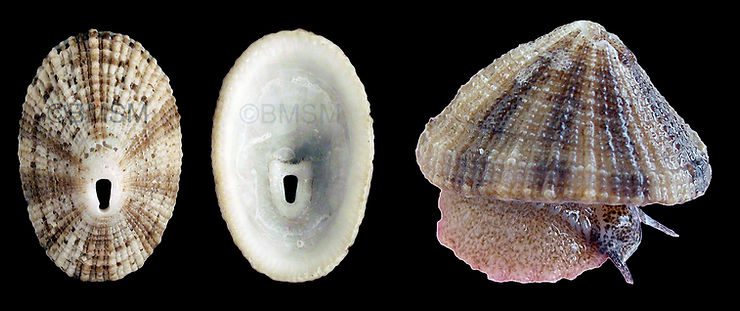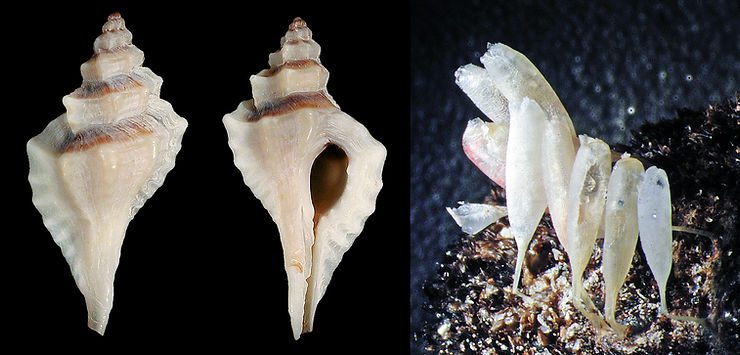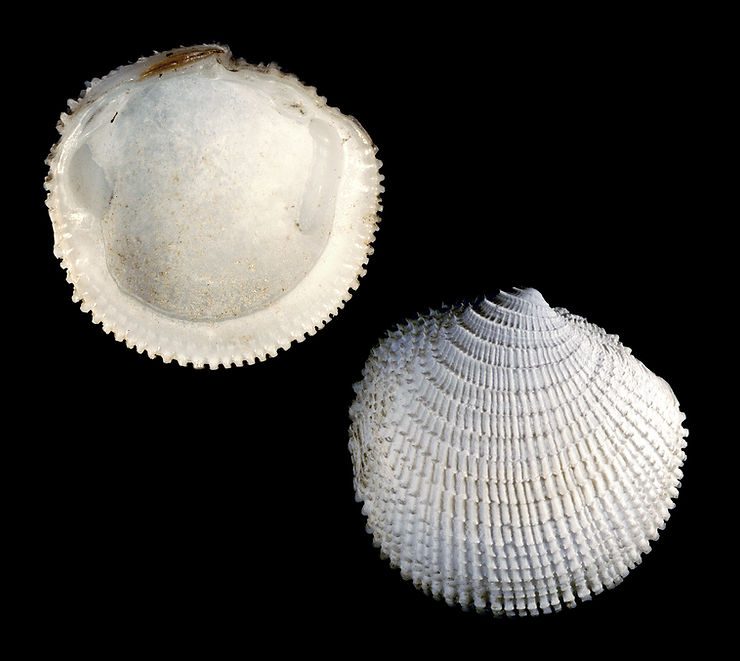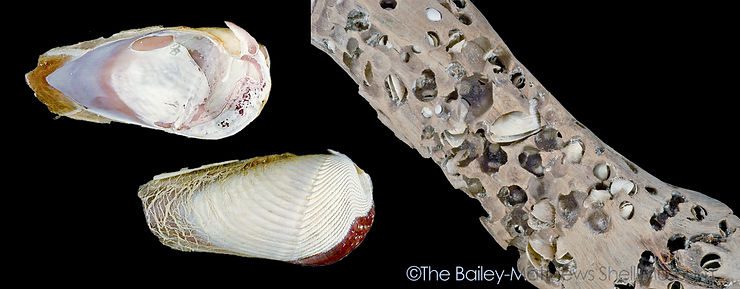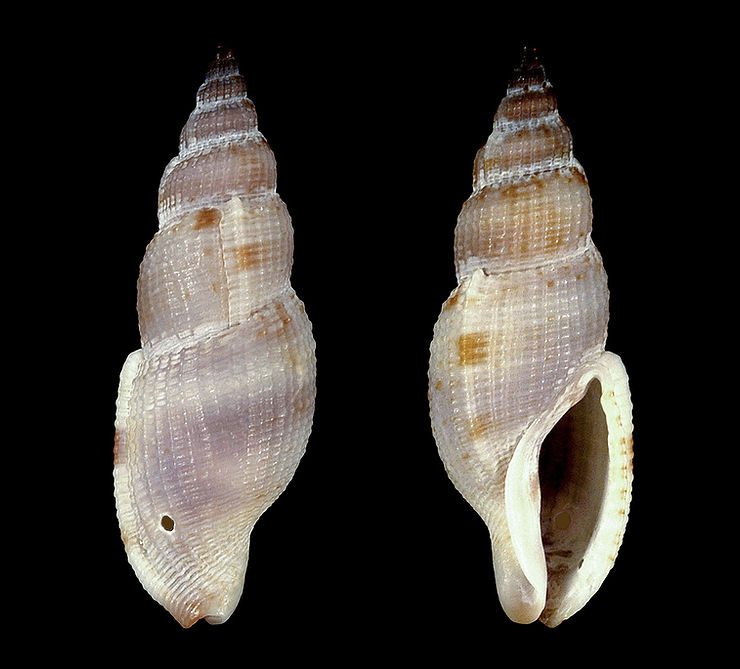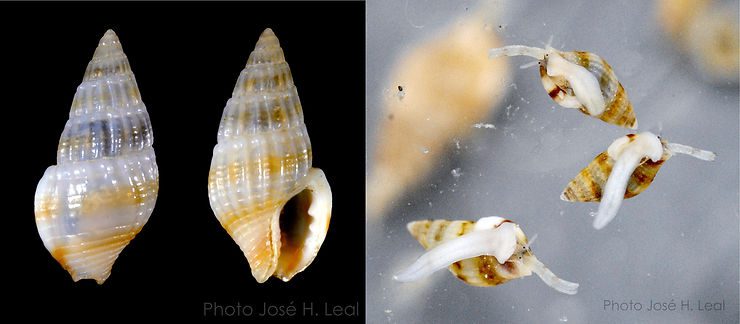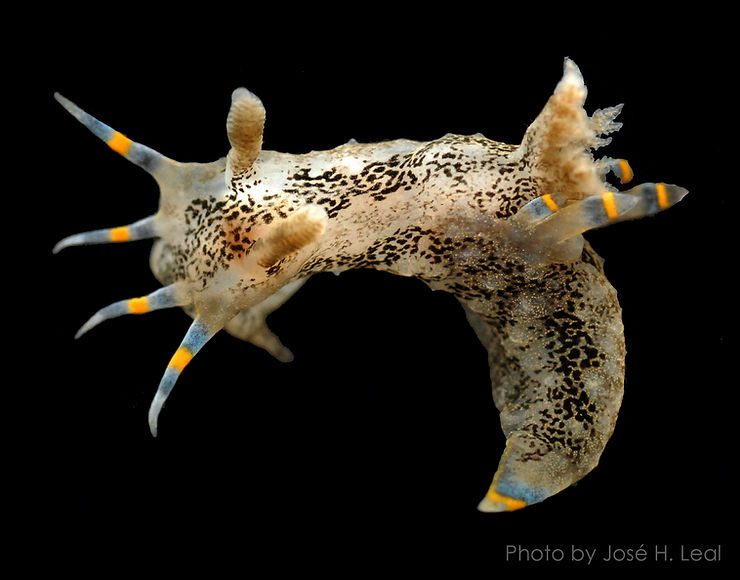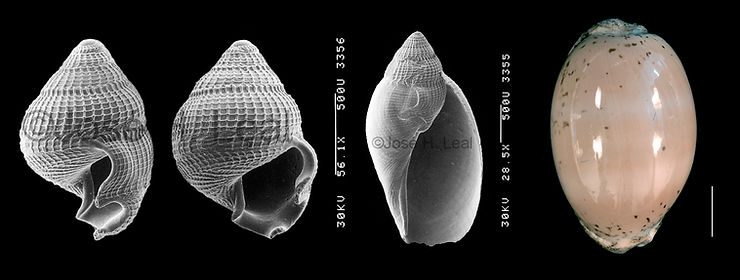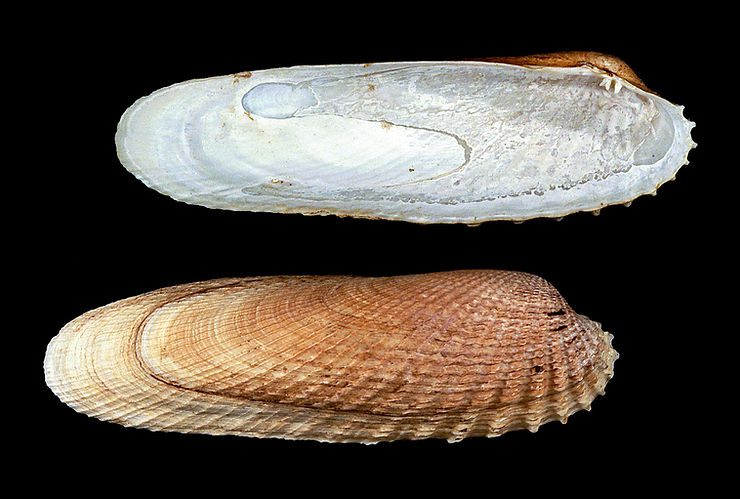
The False Angel Wing
A member of the Venus Clam family Veneridae, the False Angel Wing, Petricolaria pholadiformis (Lamarck, 1818), is so named because of its superficial similarity with the famous Angel Wing, and the fact that both burrow in compact mud or peat. However, the two species belong in separate families, with the False Angel Wing sharing its genetic and anatomical features with Venus clams. Among other differences between the “true” and the False Angel Wing are the size, much smaller (to two inches) in t
